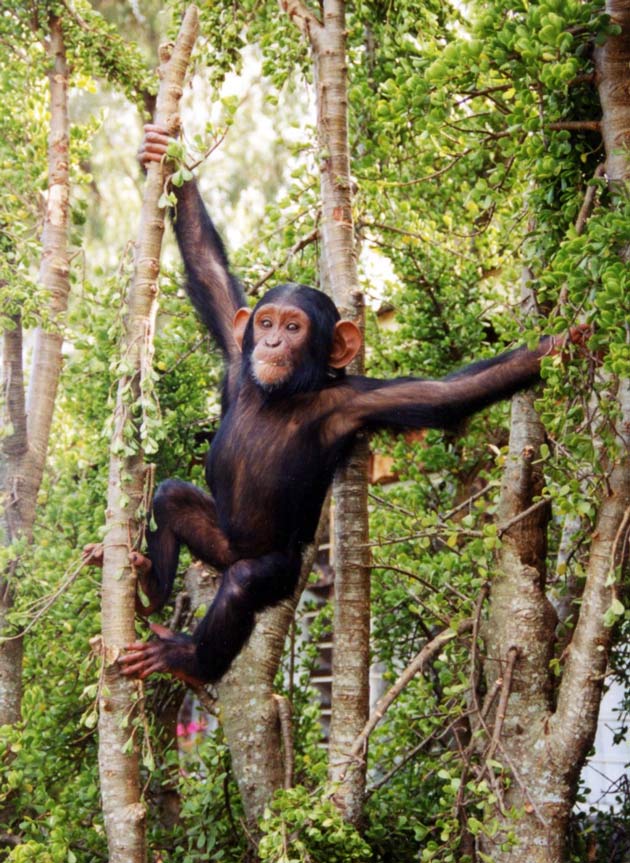When Humans and Chimps Split

A new study of genes in humans and chimpanzees pins down with greater accuracy when the two species split from one.
The evolutionary divergence occurred between 5 million and 7 million years ago, an estimate that improves on the previous range of 3 million to 13 million years in the past.
Modern chimps are the closest animal relative to humans. Knowing when the two split has implication both for understanding how quickly evolution works and for imagining the likelihood of intelligent beings elsewhere in the universe, researchers said today.
"There is considerable interest in knowing when we diverged from our closest relative among animal species," said Sudhir Kumar of Arizona State University. "This divergence time also has considerable importance because it is used to establish how fast genes mutate in humans and to date the historical spread of our species around the globe."
Kumar’s team used a recently developed method in genetic sequencing to make the most comprehensive comparison to date of genes from humans, chimps, macaque monkeys and rats. They examined the number of mutations in the DNA sequence of each species to estimate its rate of evolutionary change.
The results were released today in the online version of the Proceedings of the National Academy of Sciences.
The work does not exclude a broader time frame but makes it very unlikely.
Sign up for the Live Science daily newsletter now
Get the world’s most fascinating discoveries delivered straight to your inbox.
"We can conclude that humans and chimpanzees probably last shared a common ancestor between five and seven million years ago," said research team member Blair Hedges, an astrobiologist at Penn State. “Knowing the timescale of human evolution, and how we changed through time in relation to our environment, could provide valuable clues for understanding—in a more general sense—the evolution of intelligent life."










